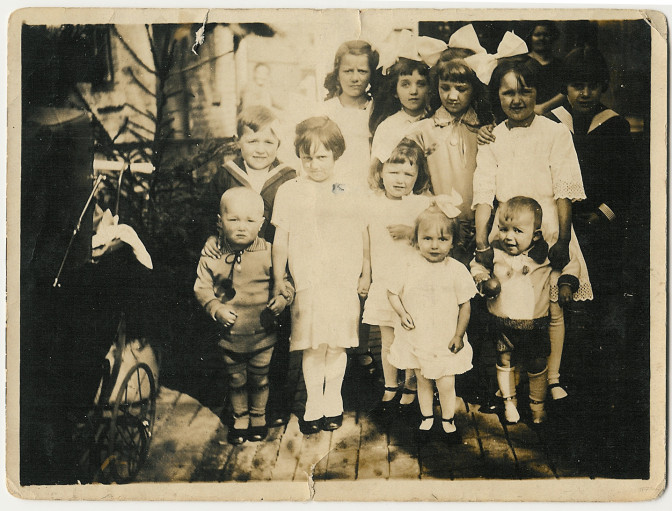Because Dutch children were often named after their grandparents, it is not unusual to find several first cousins with the same name, all named after the same grandparent. Often, these same-named cousins will be of a similar age, which can make it easy to confuse the two (or three, or even more!).
When you are trying to identify someone, always try to find a document that list the person with his spouse and parents, for example in a marriage record or death record. That will tell you which cousin you are dealing with. Baptismal witnesses can also help sort same-named people, as they were usually closely related to the parents.

Group of cousins, all grandchildren of Cornelis Trouw and Maria Gommeren. Two of the boys are named Cornelis and three of the girls are named Maria.


Just a cautionary tale. In the middle of the 19th century there sere 3 women in Bruinisse, Zeeland named De Koning. They each married Leendert Verspoor. No, not the same man but 3 different Leendert Verspoors. Two were cousins and the third a second cousin. A number of years ago when I originally entered these people into my database, there was very little information in the Internet about Zeeland genealogy and I not only confused the women but also the men. Recently I revisited one of the Leenderts because he emigrated in 1852 with a direct ancestor of mine. It took me several days to straighten out the situation.
Thank you Judd, for sharing this great example of just how confusing all these same-named cousins can be!
The upside to this naming convention is that if you have a Dutch family in your ancestry, you can look at the children’s names and make informed guesses about their grandparents’ names. My own group of Dutch immigrants kept this up in the U.S. for three generations. Often the gender of the child didn’t matter. The first child was named for the father’s father, even if it was a girl. She got a feminized version of the name. The second child was named for the mother’s father. Next came the mothers, and if the child was a boy, he got the male version of his grandmother’s name. After that, the convention seemed to loosen up, but the children would still be named for relatives. I have actually found it to be more helpful than confusing.
I use this strategy too. The specific pattern on who is named after whom depends on the time and place. For example, in 17th century Winterswijk, they only named children after deceased family members, so you can even use the names of grandchildren as indirect evidence of a death date sometimes.